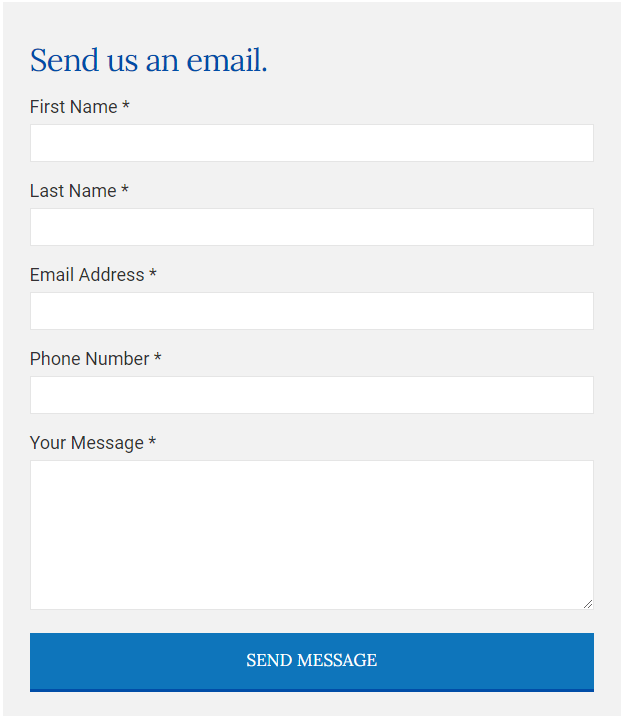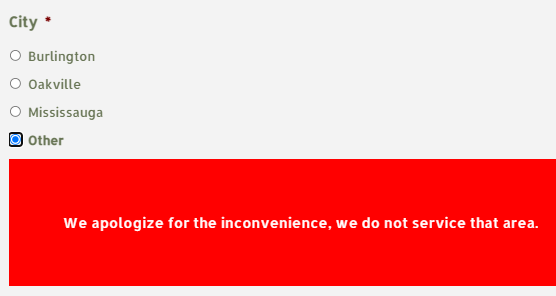The Simple Strategy That Helped One Business Owner Improve Her Leads & Bottom Line
By Nate
This is a story about one of our clients. Let’s call her Judy.
Judy ran a landscaping company and came to us before the pandemic looking to generate more business. We got her to a point where she was getting a steady flow of leads and she could reliably predict her revenue a year out. Everything was great.
However, when the pandemic hit, she got overwhelmed with requests for work. The calls and emails wouldn’t stop. She got overworked and stressed out. So we made a few changes to her advertising strategy, her messaging, and her contact form… and that’s when everything changed.
She went from 233 leads with a 40% qualification rate to 112 leads with a 97% qualification rate. That means that she generated 15 more qualified leads while spending less than half the time answering emails and calls.
What’s more is that these were clients with fewer constraints, higher margins, and were generally easier to work with.
Let’s look at how a few simple changes allowed her to work with more of her dream clients, free up her time, and triple her profit.
The Key to Increasing The Quality of Your Leads: Your Contact Form
This is what 95% of home service contact forms look like.

If lead generation is your #1 priority, then there is nothing wrong with this approach. However I have a hunch that if you’re reading this, your main challenge isn’t a lack of leads, but rather the fact that you have too many leads.
The issue with this form is that it’s an invitation for just about anyone and their grandmother to contact you. It’s kind of like being a celebrity and sharing your mailing address on social media. People you don’t necessarily want to interact with are going to start knocking on your door.
Being in the home service industry these days makes you a bit of a celebrity given how in-demand your services are, so it’s time to tighten things up. Like a bodyguard, you want to put up some parameters around who can and cannot contact you!
How To Pre-Qualify Your Leads Before They Inquire
Now back to Judy.
This is what her contact form looked like after she told us she wanted to dial back the number of inquiries she was receiving.

Compare that to the generic form the vast majority of home service companies are using and you can see how the quality of her leads was so deeply impacted.
You may be asking yourself: “Who in their right mind would ever take the time to fill out this neverending form?”. The answer to that question is: the people who are actually committed to working with you and match your pre-defined criteria, that’s who!
It can be hard to wrap your head around the idea of adding barriers between you and your prospects – especially after being taught to reduce friction at all costs. But the times have changed. Remember that your biggest challenge isn’t lead quantity, it’s lead quality.
Are leads going to drop off? Absolutely. Far fewer people are going to contact you. But this is a good thing. Those who contact you are going to be much more qualified to work with you.
Think about it. You’ll eventually ask these questions of your prospects anyways, right? Why not automate the process and save your team the time and effort involved in asking all these questions later on?
This is how you overcome this challenge and differentiate yourself from 95% of your competitors. You create exclusivity and a sense that you don’t work with just anyone.
The Hidden Secret To Improving Your Contact Form: Conditional Formatting
Now for the secret sauce. This is the strategy we used to drive qualification rates through the roof.
In addition to the questions displayed on Judy’s form, some fields are hidden and are only shown based on the answers provided. This is called conditional formatting and it is a powerful way to add additional filters without negatively impacting conversion rates.

There is deep psychology at play here: someone who starts to fill out your form is invested in moving forward and is more likely to complete the form than if all questions were laid out from the very beginning.
In addition, if an inquiry falls outside of Judy’s scope of work, the prospect is unable to proceed with the form and is automatically disqualified. For example, Judy only services the areas of Burlington, Oakville, and Mississauga. She isn’t interested in traveling elsewhere and therefore does not want to receive inquiries from leads located outside of her geography.

The same idea can apply to a prospect’s budget. Anyone with a budget outside of your target range shouldn’t be able to proceed with submitting your form. If you can’t help them, why give them false hope? This question alone can have a profound impact on your qualification rate by setting the right expectations from the get-go!
Forms with conditional formatting consistently outperform forms that have all questions displayed from the outset. In fact, when we A/B tested Judy’s form, the form with conditional formatting had a 23% higher conversion rate!
The beauty of this method is that you can tighten or loosen the parameters, just like a dial. Getting to a point where you’re looking for more leads? Simply remove some of the more cumbersome questions. Looking to increase quality of your leads even further? Add more qualifying questions pertaining to your key areas of consideration.
The End Result
These simple changes to Judy’s contact form — combined with an ad strategy that spoke to her dream clients — led to Judy tripling her profitability while freeing up hours of her time each day. This was a game changer for Judy and ultimately allowed her to sell her business earlier and for more money than expected.
If you’re interested in setting up a similar strategy for your business and creating these kinds of results, contact the team at Intrigue today.